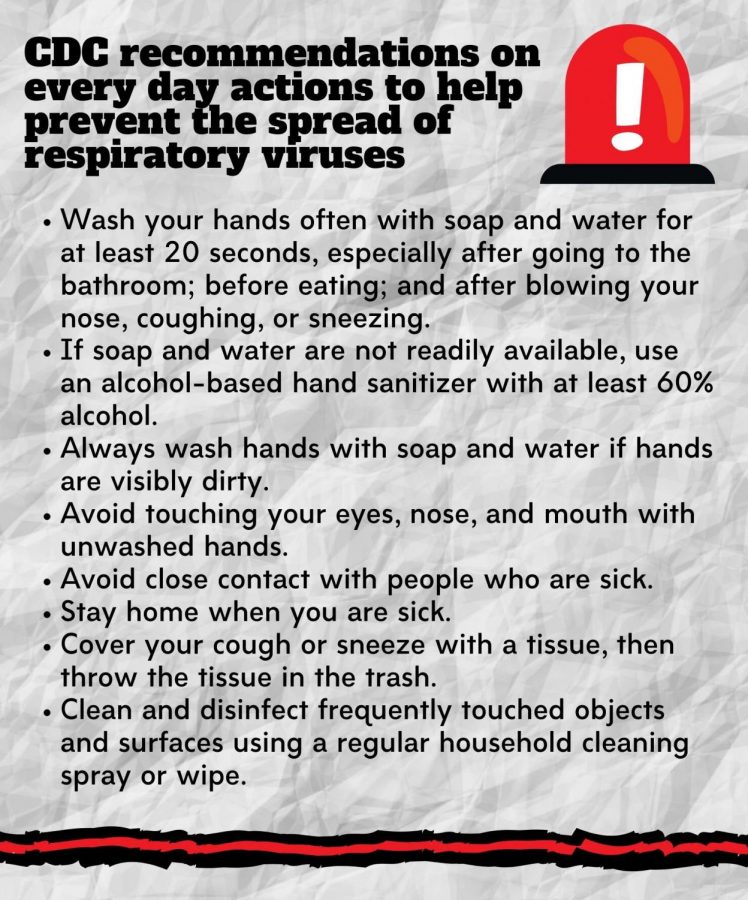Corona virus: facts, not fiction
With rumors and facts spreading faster than the actual virus, it is hard to know what is the actual threat of the coronavirus. Some people wonder which facts are myths and what are the truths about it. Here are some facts and some tips on how to stay healthy in the flu season and to avoid the coronavirus.
The coronavirus started in Wuhan, China and has worked its way to the U.S. CBS News has confirmed that there have been twelve confirmed cases in the United States as of February 6th. The most recent case was just confirmed Wednesday, February 5th in Madison, Wisconsin. Worldwide the coronavirus has infected more than 28,000 people and killed more than 600 in the mainland of China.
The twelve confirmed cases in the U.S. are California with six cases. Illinois has two, one in Arizona, one in Washington, one in Massachusetts and the one confirmed case in Wisconsin. Many people in the U.S. are worried they can get infected, but are not sure how they can get infected, what the symptoms are or even how to prevent getting the virus.
The symptoms can start with pneumonia and rapidly progress to a severe cough, fever and difficulties breathing. In the most severe cases there can be organ failure. China’s Health Commission has confirmed that transmission of the virus can happen with human to human contact. The Guardian News encourages people not to panic. The spread of the virus outside of China is worrying but not an unexpected development.
There is currently no vaccine to prevent 2019-nCoV infection also known as the coronavirus. The best way to prevent infection is to avoid being exposed to this virus. However, CDC always recommends everyday preventive actions to help prevent the spread of respiratory viruses. Doctors would recommend washing your hands for at least 20 seconds, use an alcohol-based hand sanitizer with at least 60% alcohol, avoid touching your eyes without unwashed hands, avoid close contact with people who are sick, stay home when your ill, cover a cough or sneeze with a tissue and clean touched objects in a household.
Your donation will support the student journalists of Willis High School. Your contribution will allow us to purchase equipment and cover our annual website hosting costs.

Zulema is a senior, she took a year of journalism and also took two years of photography before joining the yearbook and newspaper staff this year. After...

Katlyn is a senior, she plays softball and plans to attend college at Sam Houston University to study nursing.
You can reach her at [email protected]







